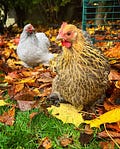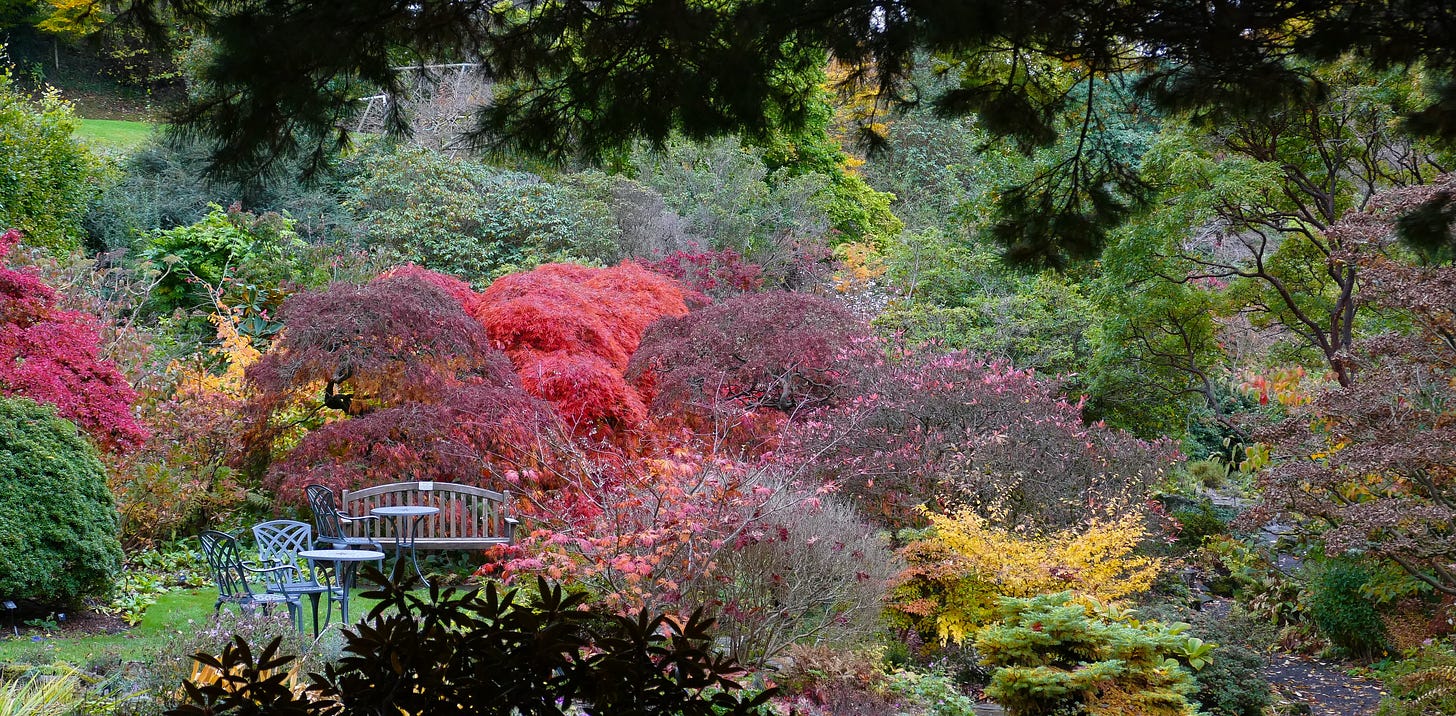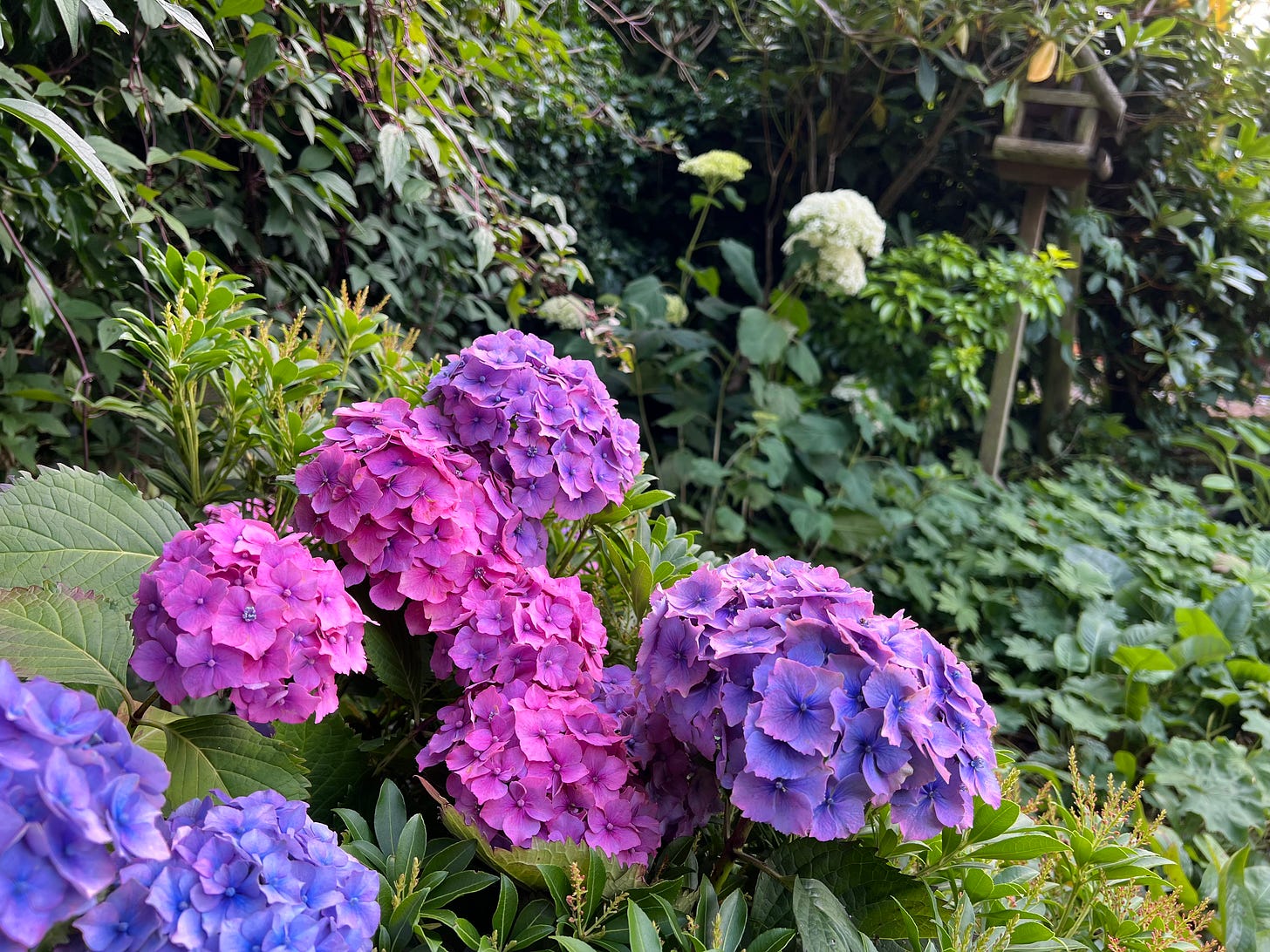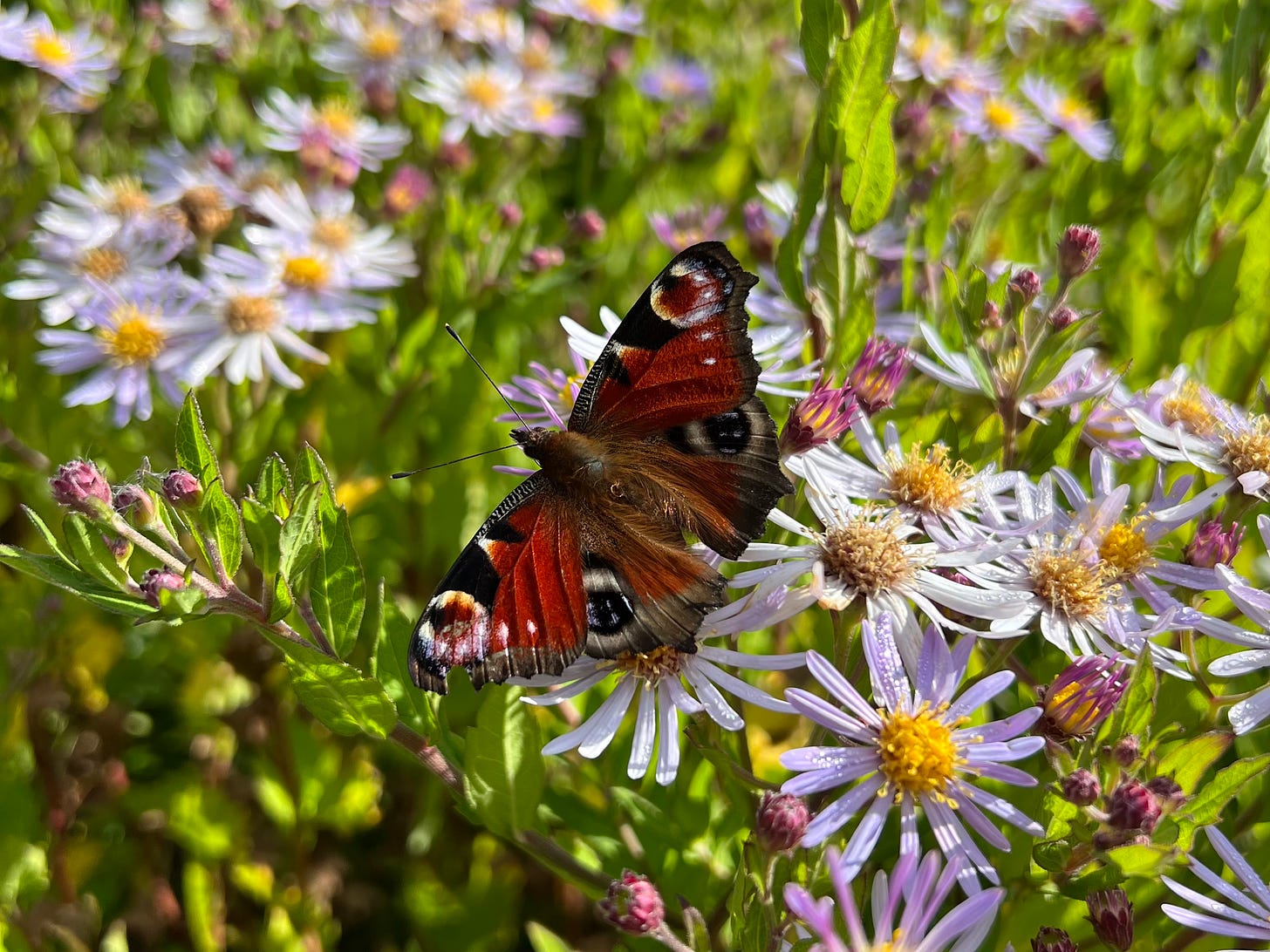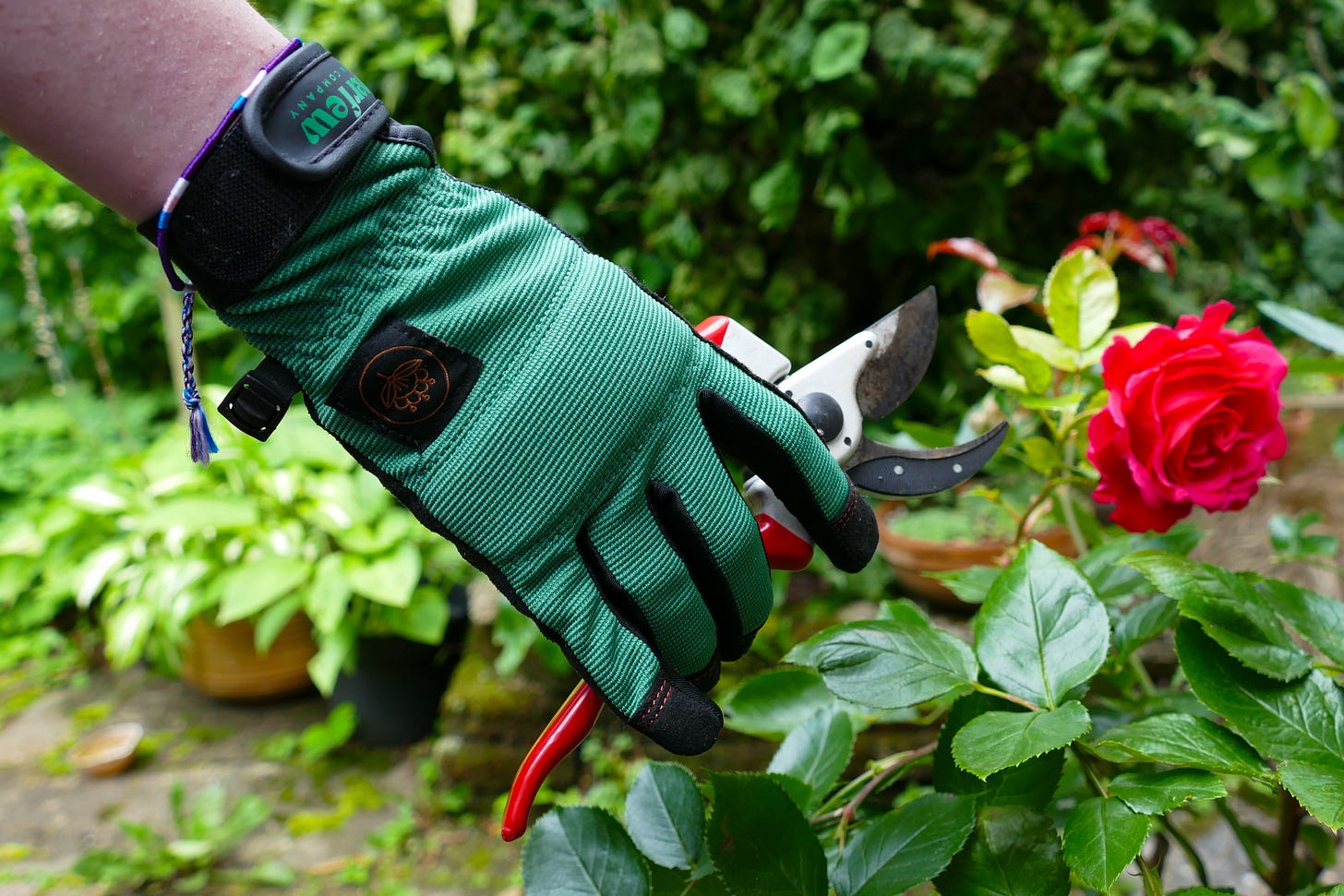Autumn audit & gardening gloves
Time to take a look around the garden and assess how it's looking
Late summer and moving into autumn is a great time to assess your garden and begin to make plans for next year. Soon the very last of the summer flowers will be over, foliage will fall, and much of the garden will be brown, bare and slightly soggy. It’s much more difficult at that point to have a vision for how you want your garden to look next year, so take the opportunity now to check what’s working and what’s not. I suggest you make a cup of tea, pop on a cosy jumper and take a wander around your garden with a critical eye.
Are there any gaps in your border or pots? Perhaps a perennial is looking past its best, or a shrub is showing signs of struggling. Note any areas lacking colour, foliage or a variation of height or texture. If there’s a lot of bare soil - prone to attracting weeds - think about what you could plant there instead to provide cover and interest.
There’s the opposite problem too: some plants are very vigorous and can begin to take over a bed or border, by spreading or self-seeding all around. Some varieties of hardy geranium and crocosmia, for example, need regular attention to stop them from dominating a garden; likewise, aquilegia, foxgloves and lady’s mantle (Alchemilla mollis) are all inclined to pop up across your plot if they’re not deadheaded after flowering.
However this can be an opportunity to fill some of the gaps you might already have identified without the need to buy more plants. Divide any large geraniums or crocosmia and replant the divisions wherever there is a space needing filled. Dig out any small seedlings you can identify - compost them, move them elsewhere or share them with friends and family if you really, definitely have too many already!
You might be missing the bees and butterflies - if you’ve noticed there haven’t been many in your garden or allotment this year, it might be because there aren’t enough flowers to attract them in. Consider adding more pollinator friendly plants in pots or around your beds and borders to boost biodiversity.
One way you can do this and provide a boost of colour early in the year is by planting bulbs in autumn. Daffodils and crocus can all be popped into the ground now, while tulips are best planted in November or December. Figure out what colours will suit your style, and where they might fit into your current planting - perhaps in some of those gaps? Or maybe your front doorstep needs a more colourful and welcoming arrangement.
Another thing to check on is the state of your gardening tools. Do your secateurs, loppers or saws need sharpening? They’ll be needed soon for bringing down branches or cutting back shrubs, so make sure they’re in good condition - clean and sharp. If you’re missing a decent spade, a hoe, or your trowel has seen better days, put them on your Christmas list. Family members will be glad to gift you something you need and will really appreciate.
Finally, it’s almost time to pull out the BBQ cover and bring in the outdoor furniture, if you have somewhere to store it during the winter months. Take note of anything that might need repainted or repaired in the spring, and if you need to replace your bistro set or sun loungers, most garden centres will be hosting end-of-season sales at the moment, so it’s a great time to pick up a bargain.
Hand in glove
Gloves and gardening go hand in hand - literally! While I enjoy getting my hands in the soil, sometimes it’s necessary to don a pair of gloves for a little extra protection.
I’ve been using all of the five pairs below during this growing season, and I can recommend them for comfort, wear or sustainability. All are reasonably priced and they’ve lasted well, used for various tasks such as cutting the grass, pruning, potting on, deadheading, mixing compost or planting out.
Niwaki Gardening Gloves - my go-to gloves for everyday use. They’re close-fitting with a bit of grip, making them perfect for tasks which require a bit more precision; however this also means they’re not very thick so if you’re ripping out brambles, you’ll need a much tougher pair.
Feverfew Women’s Gardening Gloves - stretchy and comfortable, with reinforced fingertips, plus a padded palm for extra comfort and protection. A really good all-round glove developed by a small business based in Orkney which aims to provide functional gardening wear for women.
Eco-flex Comfort Gloves from Town & Country - a sustainable choice, made from ocean plastic waste. Another light and tight-fitting pair of gloves which stay cool and very stretchy and comfy, although the grip around the thumbs and fingertips is not as hardwearing as other brands in my experience.
Briers Professional Gardening Gloves - a tougher pair for heavy-duty tasks, with leather padding around the palms and fingers and an adjustable velcro strap at the wrist to keep them secure. These are hard-wearing and mine have lasted a long time despite tackling some tough jobs!
Skytec Argon thermal gloves - warm, thermal gardening gloves are an essential for me in the colder months to reduce poor circulation in my fingers. These are very thick and grippy, with an insulated lining which offers a good deal of warmth; they’re also waterproof, so an excellent choice for rainy days too.
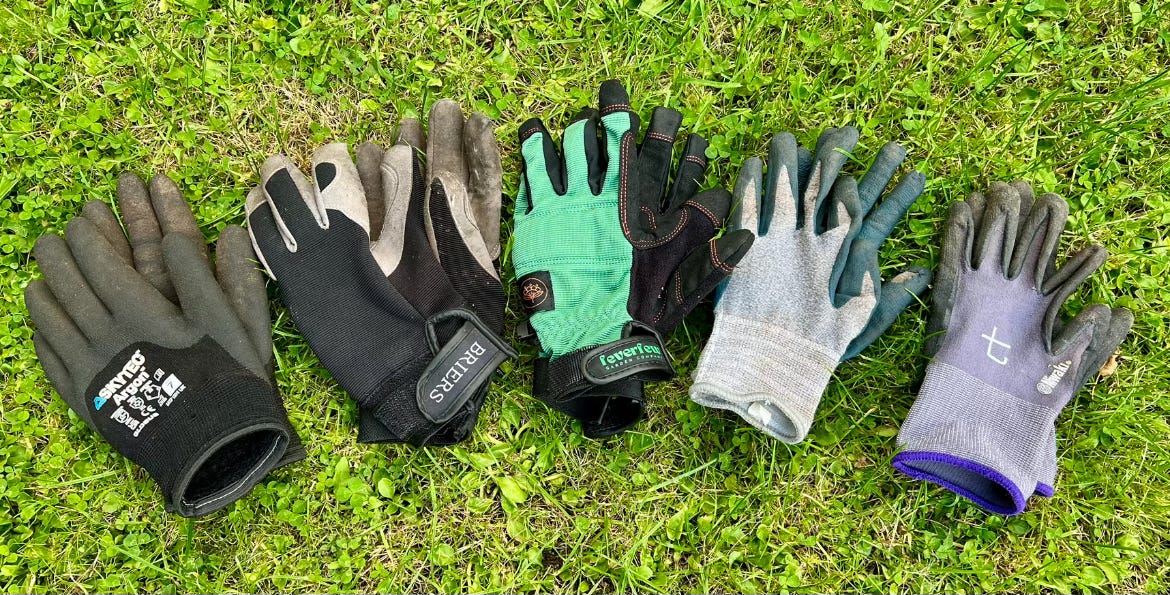
A version of this article appeared in The People’s Friend, September 2024


